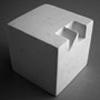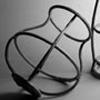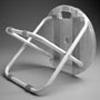With the increase in number of computer modelling solutions, the reason to learn sketching as a skill leads to a debate- whether this skill is necessary to acquire, between novice learners and traditional instructors. The term sketching in the course refers to the activity of drawing (representing) three-dimensional objects located centrally, surrounded by students along the periphery of a circle.
The art of sketching in design schools is currently acquired through perseverance and can be considered liberal to invite a methodical approach. Growing impatience and the need for instant results in novices are in contrast with respect to representation skills which are generally achieved by extensive practice and patience. Given the context, this course is a collection of students’ work conducted over two years of teaching drawing of three-dimensional objects at the Department of Design, Indian Institute of Technology Guwahati, Assam, India.
Sketching should be understood as skill, which requires a certain kind of dedication and sustained enthusiasm. Students with lesser aptitude or weakness in drawing encounter repeated failures in early stages of sketching. This creates a fear in them and they begin to consider this skill as an inborn talent, which cannot be attained through practice. With designers being exposed to computers as a new tool, such students display reluctance to sketch and term it as an artistic ability rather than looking at it as a tool to enhance visual thinking. (Bradshaw, 2002)8.
To be an efficient product or communication designer, a student must master skills of representing thoughts in a visual form (2D and 3D) through sketching. The ability of a student to sketch or draw a three-dimensional form with precision lies in going beyond external appearances, to internalize the underlying structure and geometry of the form. In real world, the underlying structure (fig.1.) is never revealed unless the object needs a repair or a new structure has to be built.
In comprehension to the problem of three-dimensional drawing, the course presents newer methods to teach transition from two-dimensional to three-dimensional drawing in successive stages. It further guides the students towards visualizing additional forms over the artifacts presented to them. Moreover, the argument- why should novices learn to draw/ sketch three-dimensional forms as hidden structures, (i.e., as opaque objects), is put forward in the form of course work, ‘Visualization Drawing’.







